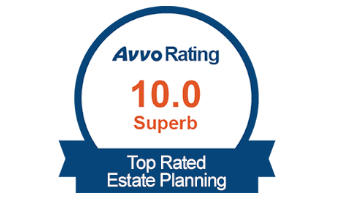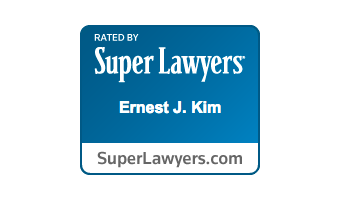Trust Administration Process
We know that families who seek out information regarding trust administration, are coming to us after having experienced the loss of a loved one. The next steps can seem overwhelming. We are here to answer all your questions.
If the Decedent created a Trust, the Trust (or a portion of it, if it was a married couple’s trust) is now irrevocable even if the name of the trust includes the word “Revocable.” This is because the trust was revocable during the lifetime of the Decedent who created it, but now that person who could have canceled or changed it, is no longer able to do so, which renders the Trust “irrevocable.” The Trust documents should be consulted to see who the next Trustee (the Successor Trustee) is to be, and the Trust administration process should be started by that Successor Trustee as soon as reasonably possible. There are some important deadlines and dates to keep track of including:
- If there is a Trust left by the decedent, the person who has custody of that document should safely deliver it to the named Successor Trustee (the next trustee named after the Decedent in the Trust document). ORIGINAL DOCUMENTS SHOULD ALWAYS BE CAREFULLY STORED IN A SAFE LOCATION, and anyone who needs to see the document should be provided with copies only, the originals should never be given to anyone until after a trust attorney has been consulted and retained.
- Within sixty (60) days of the death or incapacity of the Trust settlor, the Successor Trustee must serve a Notification by Trustee on all affected parties, in the format required by the probate code. This notification is also required to be given whenever there is a change in trustees.
- It is important to provide the Notification by Trustee promptly, as the date of serving it starts the 120-day clock running for any challenges to the documents to be brought up, and because the trust beneficiaries have the right to know who is managing the Trust assets and whether it is being managed properly.
- If the estate is of sufficient size (about $4M+ for married couples, or about $11M for single person in 2023) there may be estate tax returns to be filed or tax planning needed. A probate attorney and a CPA should be consulted to review the Trust and advise regarding tax matters, and this should be done as soon as possible so that preparations can be made to meet the 9 months from the date of death deadline for estate tax return filings and estate tax planning.
- If there is real property in the estate, there are some filings to be done with the County’s Tax Assessor/Recorder’s office within 150 days of the date of death. (BOE-502D)
- If there is a family home that qualifies for the parent-child reassessment exclusion, a claim form should be filed as soon as possible to prevent reassessment of the property tax, but no later than three years after the date of death and before the property is sold to a third party. (BOE-58)
Trust property immediately needs to be looked after, and the steps required will be dependent on the family situation and the types of assets in the Trust. If the Decedent left any assets that were not titled to the Trust, additional steps such as probate may be needed to bring those assets under the control and management of the Trustee. If there is a business, then immediate action will probably be required to keep the business operational and to get access to business bank accounts so that payroll and taxes can be paid, inventory secured, etc.. The same goes for rental property, stocks, etc.. We have a simplified checklist for interim steps to consider in a typical post-death situation, but remember that nothing can take the place of specific legal advice for your family’s particular situation.
A good rule of thumb is that when the death certificate becomes available, the first consultation should take place to discuss the assets that need to be looked into so that any urgent matters can be addressed and the Trustee can receive the information needed in order to meet their duties to manage the Trust assets properly.
Here is what you need to know about working with us:
Step 1 – First Contact
We strongly recommend that whenever possible, the person named as the next Successor Trustee be the one/s to initiate the first contact with our office. This is important because different relatives may have different rights, and the best interests of a beneficiary or potential beneficiary are different than those of the Trustee. As one important example, an attorney advising a beneficiary or potential beneficiary must put that beneficiary’s best interests first, even if it means advising them to consider challenging the validity of a Trust that leaves that person with less than they were promised; a Trustee on the other hand, must act to carry out the Trust’s explicit instructions, and must manage the assets in the best interests of all of the Trust beneficiaries equally, without favoring the interests of any particular beneficiary over the others. An orderly and cost efficient administration of the Trust without challenges or other litigation, is usually a Trustee’s main goal. In addition, only the Trustee has the authority to take action over Trust property, including hiring an attorney and paying attorney fees, administrative expenses, asset maintenance and other costs from the Trust.
At the time of the first contact with you the Successor Trustee, our staff will set up a date and time for the first consultation meeting for which you should set aside 1 to 2 hours to go over the trust terms and general information about the trust property to be administered.
At this point in the process, our staff will not be able to quote exact fees for our services because we don’t yet know what kind of Trust terms and instructions were left, what assets will need to be collected by the Trustee and protected, or what assistance will be needed from us. Trust administration services are provided at the hourly rates of attorneys and staff.
Step 2 – The Client Questionnaire
When you come to your First Consultation, we ask that you bring your completed Client Questionnaire and a copy of the Trust and pour over Will. We need to have as much information as is available about the Decedent’s general family situation and Trust assets, to help us provide you with information that is directly relevant to your situation. All information you provide is confidential. You can click the link above or we can send the Client Questionnaire to you by email or mail, or you can complete it in our office by arriving 20 minutes before your consultation time.
Step 3 – First Consultation Meeting – Approx. 1-2 hours
Our First Consultation meeting will generally take 1 to 2 hours and we will go the Trust’s general instructions and the Trust administration process and goals. At the meeting, the Successor Trustee will determine whether we are a good fit to work together and sign the retainer, at which time a retainer deposit is due. Trust Administration services will be charged at our an hourly rates for attorneys and staff and can be paid from the Trust assets.
Step 4 – Trust Administration Document Preparation
Our office will prepare all of the documents needed for the Trust administration process to begin, including notices, affidavits, real property documents, and letters for financial institutions so that the Successor Trustee can take control over the Trust assets, and set a signing meeting for the Successor Trustee to execute them. We will go over the documents and provide detailed instructions needed for marshaling and protecting the Trust assets.
Step 5 – Marshaling Trust Assets
Once the documents evidencing the Successor Trustee’s authority are available, the Trustee will be able to obtain financial information, collect Trust accounts, and review all Trust account information from financial institutions, and we provide complete instructions and the certification documents needed at each step. We will assist the Trustee in gathering all of the assets so they remain protected, and assist the Trustee in obtaining the information needed so that important decisions can be made to safeguard the assets (sell the stock? close the business? rent the real property? collect rent?) with the assistance of financial professionals who can advise the Trustee on the best options. We assist with the necessary notifications to the beneficiaries to keep them informed of the Trustee’s decisions and proposed actions to lessen the possibility of beneficiary complaints.
Step 6 – Communications and Reports to Beneficiaries
An important aspect of the Trustee’s role is to communicate and keep the beneficiaries updated on the progress of the administration of the Trust. Depending on the complexities of the assets under managements and the relationships between the parties, some Trustees are comfortable sending frequent updates to their family members on their own by text or email so that the beneficiaries feel secure and comfortable in the knowledge that the Trustee is actively managing the tasks they need to complete, and that the beneficiaries can expect to be able to receive their distributions with minimal delays. Beneficiaries would generally also want to know about any significant transactions with trust property that are being contemplated, so they can weigh in on whether something should or should not be done, such as to sell and asset or distribute it in kind, etc.. We can assist with providing formal status reports so that there is a clear paper trail of the updates, status reports, and notices that were given regarding the Trustee’s management decisions and proposed actions, to lessen the likelihood of beneficiary complaints with the process.
Step 7 – Estate Debts and Taxes
As the court-authorized party to act on behalf of the Trust, the Trustee will need to manage and pay Trust debts. If there might be additional creditors, we can assist with the Trust notice process to publish notice and shorten the time for creditor’s to appear and make claims. The Trustee will work with tax advisors and make sure necessary returns are filed and taxes paid. Once the debts and taxes are cleared and the time period for claims has run out, the Executor/Administrator can plan for the accounting and distributions to the Trust beneficiaries.
Step 8 – Accounting & Distribution
We’ll have additional conferences with the Trustee to discuss the distribution plan throughout the administration. Sometimes assets need to be sold to effectuate the split amongst multiple parties. Sometimes the parties can agree to keep certain properties and distribute them “in kind. ” We’ll help the Trustee to give an accounting, craft a distribution plan, and get it approved, including giving the required notices along the way to protect the Trustee from any disgruntled parties. We will advise the Trustee on whether to keep any reserve in the Trust in case of audits or other events. The final accounting and distribution plan will be sent out to the beneficiaries for approval. We’ll assist the Trustee in obtaining Releases from further liability and in making the approved distributions to the parties, paying final administrative fees and costs, and documenting that this has been properly done by preparing and obtaining the needed receipts and other documents from the parties, and close the trust administration file.
Some helpful terms to know for a trust administration:
Decedent/Settlor – the person created and put property into the Trust.
Successor Trustee/Trustee – the person in charge of taking care of the Trust assets and carrying out the Trust’s instructions.
Beneficiary- the person/s who are named in the Trust to receive assets.
Fiduciary Duties – A Trustee of an irrevocable Trust is a fiduciary, which means that they are basically in a position of trust, taking care of other people’s (beneficiaries) money. There are many rules for fiduciaries which the law requires a Trustee to follow, including the duty to be loyal to the Trust beneficiaries, to act in the best interests of the Trust as a whole, to manage the trust assets competently and prudently (more carefully than managing their own assets), to keep the trust assets safe from loss, etc..





